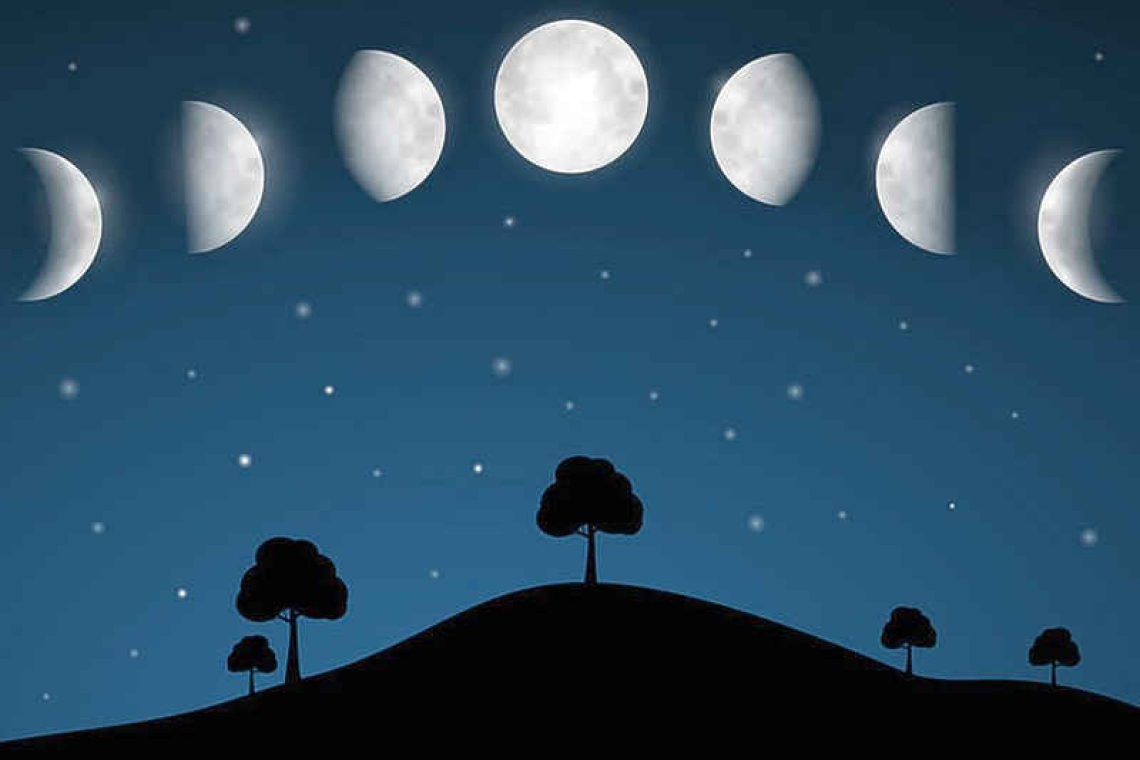~ St. Maarten’s Backyard Astronomy for April 28 - 30 ~
Sun rises at 5:46am
Sun sets at 6:33pm
Lunar phase: 2nd Quarter, Waxing Gibbous
Moon sets at 2:20pm
Moon rises at 12:48pm
This weekend, we have a half moon overhead at sunset, so it’s a wonderful opportunity to understand our solar system’s amazing 3-D geometry. Consider this: The lit side of the moon always points toward the sun.
The moon is a sphere, even though we see it as a circle. So, the line that divides the moon into a dark side and a lit side is sometimes straight and sometimes curved, but try to think three-dimensionally. That line, called the Terminus Line, is always cutting the moon in half, even during the full moon, and even when the moon appears whisker thin.
This weekend’s moon is an easy one, clearly the half moon overhead at sunset has its bright side towards the sun, and two weeks from now, you’ll see a half moon overhead at sunrise. If you notice, it’s the other side lit up as we see the sun rising in the east.
At the time of the full moon, you may say, “Wait, where’s the terminus line; and where’s the sun?” The answer is the sun is behind you (and behind the earth) and the terminus line is at the edge of the moon’s lunar circle.
The new moon is the trickiest one: What do we see? A thin curved line, bright and graceful. But still, that line is the edge of a half lit moon; it’s just that the dark half of the moon is the side that is mostly facing us. Need convincing? Get a ball and a flashlight; turn out the lights and check out how it looks as a friend shines the light at the ball. Let the friend walk around the ball behind you and then off to the sides – at one point, you will see a full-moon, a half-moon and, yes, even a whisker, thin new-moon.
Ah, yes, the moon – endlessly fascinating. I suggest you get out the binoculars and study that terminus line on the moon this weekend. You might even find that “X” – and the “V” which is the result of sunlight falling across the moon’s many shapes, hills and valleys. See the images included here for more insight to where these shapes are found.
If you want to try watching in moonlight, try the mornings of May 5, 6 and 7, in the hours before dawn. Why before dawn? See “Radiant” below. The American Meteor Society is listing 15 UTC on May 6 as the shower’s predicted *peak* time. But times vary between different experts, and the peak of this shower stretches out over several days. So you can expect elevated numbers of meteors a few days before and after the peak time … albeit in moonlight.
Nearest moon phase: Full moon will fall at 17:34 UTC on May 5. Moonlight will obscure the 2023 Eta Aquariids.
Radiant: Will rise in the wee hours, climbing toward its highest point at dawn. That’s why before dawn will be the best time to watch this shower.
Duration of shower: April 15 to May 27.
Expected meteors at peak, under ideal conditions: In the southern half of the U.S., you might see 10 to 20 meteors per hour under a dark sky, with no moon, when the radiant is high in the sky. Farther south – at latitudes in the Southern Hemisphere – you might see two to three times that number.
Note: The Eta Aquariids’ radiant will be on the ecliptic, which will ride low in the sky on spring mornings as seen from the Northern Hemisphere. That’s why this shower favours the Southern Hemisphere. It’s often that hemisphere’s best meteor shower of the year – but not in 2023, when moonlight will drown out most meteors.
Thank you for keeping up with the Night Sky articles, backyard astronomy designed for St. Maarten sky viewing. FYI: If you are out later on in the week, note that each star rises about four minutes earlier each day than written here, and the moon rises 50 minutes later. Night Sky is researched and compiled by Lisa Davis-Burnett. Earthsky.org is a key resource for information and images. Questions or comments? Email This email address is being protected from spambots. You need JavaScript enabled to view it.







